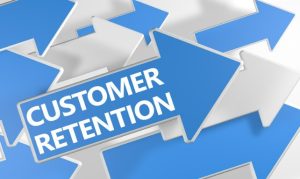Table of Contents
Customer satisfaction determines your business’s success. Your products and services alone may not provide that much-needed customer experience. Only your customer support matters and has that power you need to impact your sales.
Poor customer experience is the reason some customers switch providers. This is where customer service metrics such as social media monitoring, first contact resolution, and average response time come in to determine customer service performance.
Customer support metrics can guide your progress in every business whether it is a big or small business and even show you areas that need improvement. Below are the top five key points to help you strategize on your customer service Key Performance Indicator (KPIs) metrics and how to improve them:
5 Customer Service Metrics
1. CSAT Score Metric: Customer Satisfaction Score
The customer satisfaction score can help you point out happy customers. You can use the CSAT metric to determine the customer satisfaction scores by asking them to provide their views during a short survey.
Ask for customer feedback on their experience using a predefined scale of either 1 to 3, 1 to 5, or 1 to 10. The rating should come in after interacting with your customer support team.

The customer satisfaction surveys are key performance indicators that show how happy and satisfied customers can be. Furthermore, these types of surveys provide clear information about your customers’ feelings, support experiences, and support requests.
You can also use the CSAT score metric at various strategic points in your customer journey. For instance, you may use the survey technique after the customers have paid for a product or service before they renew their subscription.
2. CES Metric: Customer Effort Score
Customer effort score (CES) is simply a single-item experience metric. CES measures or determines how much effort should be exerted to have customer issues resolved, a product purchased or returned, a request fulfilled, or questions answered.
The main idea behind CES is to promote customer loyalty to your brands. So, when you reduce your customer effort, you are likely to create a better customer experience.
To measure your customer effort score, you need to ask questions whose answers provide numerical information. Use provided answers to calculate the overall scores before working out an average number (score).
3. NPS Metric: Net Promoter Score
The net promoter is simply a metric to determine customer loyalty. It is also a measure to show you how your customer is likely to promote your business. In this case, customers are only asked a single question which goes like, “How would you like to recommend our organization, products, or services to a colleague or friend?”

Here, customers are asked to provide a rating based on a scale of 0 to 10. Depending on their response, your customers are likely to fall into one of these categories:
- Promoters or respondents who give a rating of 9 to 10. Such customers are considered loyal promoters of your brand.
- Passives or respondents who give a rating of 7 to 8. These are satisfied customers but not ready to actively promote your brand.
- Detractors or respondents who give a rating of 0 to 6. They are considered unhappy customers. Therefore, they are unlikely to promote your business or buy your goods and services gain.
4. FCR Metric: First Call Resolution Rate
Apart from metrics such as customer churn, average resolution time, average reply time, first response time, and first contact resolution rate, there is a first call resolution rate or FCR. With the first call resolution rate metric, you can measure the success rate of the contact center in relation to resolving customers’ issues on their first time call.
FCR shows how satisfied your customers are and how efficient your team of customer support agents is when solving customers’ problems. Your customer service agents should achieve this feat without making follow-ups. As a matter of fact, a large number of organizations that measure their FCR witness an improvement in team performance.
5. CRR Metric: Customer Retention Rate
The customer retention rate (CRR) measures a percentage of your company’s customer retention in a given period. Having a knowledge base of your CRR is essential because it gives you a probability of transacting more with the existing customers than the new ones.

In this sense, your probability of selling products to new customers is low. This means that you should focus on understanding your customer retention rate and improving it in a given time frame.
CRR comes with a great customer experience as well as delightful customer service to help you improve customer retention. Customer service experience and the number of customers you can retain are factors determined by your support team. This is the reason you need to monitor CRR from your customers’ perspective.
Final Thought
There you have it! These are the top five customer service metrics you should keep tracking all along. Some metrics such as ticket volume and ticket backlog fluctuate constantly. Regardless, make sure to display customer support metrics on a robust dashboard or digital signage for your service support team to see. A real-time customer dashboard plays an active role in consolidating data from different support channels before updating it regularly. With these updates happening regularly, your team members will be able to spot any problems so they can stay on top of all incoming tickets.

